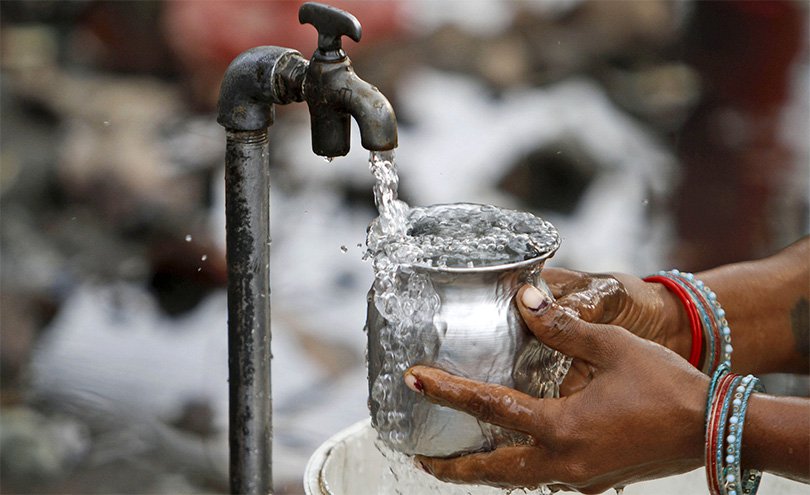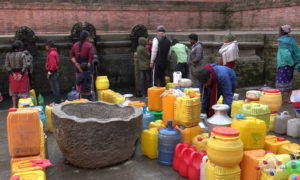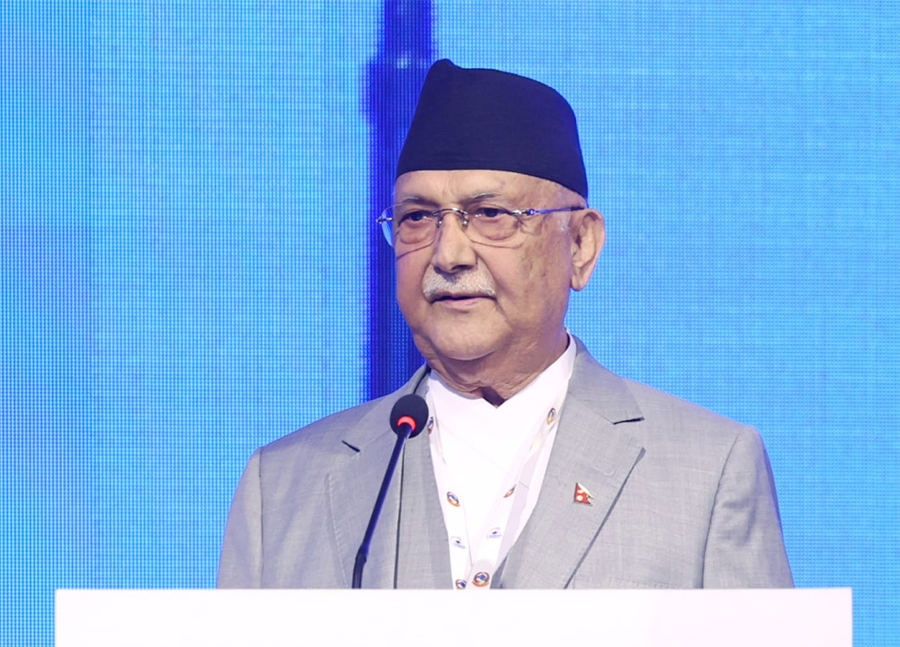For Kathmanduites, today has become an important day as the Melamchi Water Supply Project began distributing water from the Melamchi river in Sindhupalchok today.
There has been an acute water crisis in the Kathmandu valley since the 1980s. In order to ease this situation, the Melamchi Water Supply Project (MWSP) was introduced as the long-term solution to this crisis in 1998. The project was designed to divert 170 million litres of fresh water daily from the Melamchi river in the Sindhupalchok district to Kathmandu valley through a 26-km tunnel.
The executing agency for this project is the Ministry of Physical Infrastructure and Transport (MoPIT) and the Melamchi Water Supply Development Board is its implementing agency. This autonomous board was formulated for project implementation. This board recently completed the task of bringing the Melamchi water to Kathmandu, after 23 years owing to innumerable delays, conflicts with financing or lending bodies, corruption, contractors, and accidents.
Here, we bring the 23-year-long history of the MWSP from beginning to completion, covering all the major events:
1998
The MWSP was established. It began collecting the required funds for the project.
2000
The cost of this project was projected at US$ 464 million including contingencies and taxes at the price level of 2000.
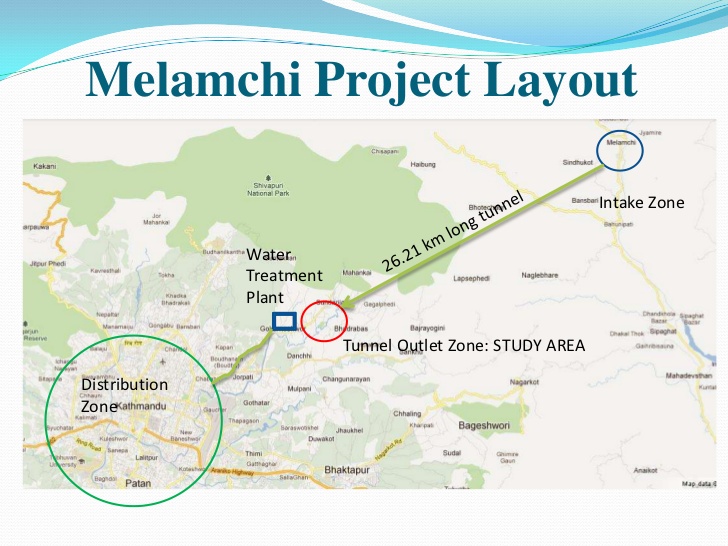
On December 21, Asian Development Bank, the main donor of the MWSP approved a loan named Loan 1820-NEP (SF), which became effective from November 28, 2001.
2002
The World Bank withdrew from the project because the board failed to appoint foreign private operators to manage the water supply.
2005
The Norwegian Agency for International Cooperation (NORAD) withdrew from the funding due to the same reason.
2006
The Swedish International Development Cooperation Agency (SIDA) withdrew from the project.
The withdrawal of these three financiers of the project resulted in a large financial deficit of $133 million in the originally estimated cost. However, the government of Nepal convinced the ADB to cover the deficit.
Although the project was expected to be completed in 2006, it did not happen. The period of the late 2000s was marked by political upheaval, mainly the Maoist insurgency.
A British company, Severn Trent International, was appointed to manage the water supply.
2007
In August, the MoPIT dropped the contract awarded to Severn Trent International because the company was penalised in the UK for poor performance and lack of transparency.
The government of Nepal and funding partners of the project split or restructured the MWSP into two distinct sub-projects, the Melamchi River Water Diversion Subproject (Subproject -1) and (ii) Kathmandu Valley Water Supply and Sanitation Subproject (Subproject -2).
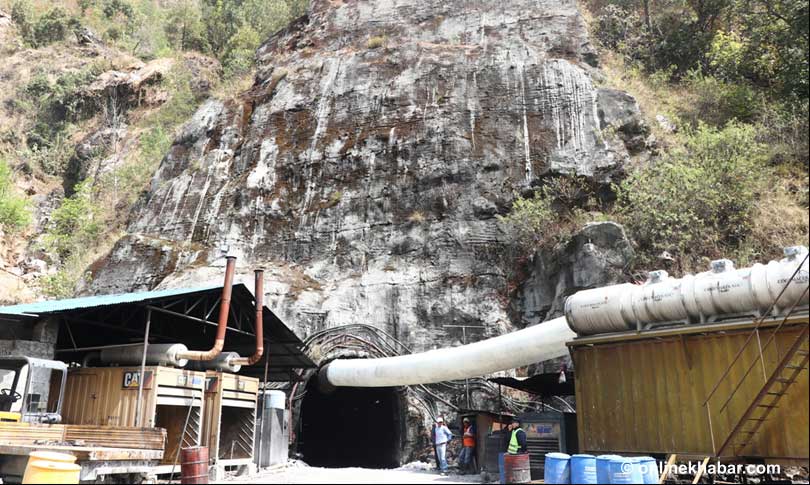
Subproject-1 compromised of construction of the water diversion tunnel and all other project activities in the Melamchi valley and water treatment plant (WTP) at Sundarijal. Likewise, Subproject-2 covered all water distribution activities in the Kathmandu valley including the construction of the nine service reservoir tanks, bulk distribution system, distribution network, and wastewater treatment facilities.
2008
In February, Kathmandu Upatyaka Khanepani Limited (KUKL), was appointed to manage the water supply. The Project Implementation Directorate (PID) of the KUKL was appointed the implementing agency of Subproject-2.
After the project was restructured, the total cost of the project was reduced to a total of $317.3 million and the loan was extended up to June 2013. The cost was cofinanced by ADB (Loan 1820-NEP) – $137 m, JBIC – $ 47.5 m, JICA – $18 m, NDF – $10.5 m, OPEC – $13.7 m, and the GoN – $ 90.6 million.
2009
After the restructuring, the Chinese Railway Bureau Group was awarded the project contract.
In July, local groups padlocked the MWSP’s office. It was unlocked in January 2010.
In August, the construction of the tunnel was initiated.
2012
In September, the Melamchi tunnel contract was cancelled. This handicapped project financing and made project implementation lengthy.
The contract awarded to the Chinese Railway Bureau Group was terminated citing the unsatisfactory performance of the group.
In November, the contract was put for rebid after the ADB financed an additional $25 million in the project.
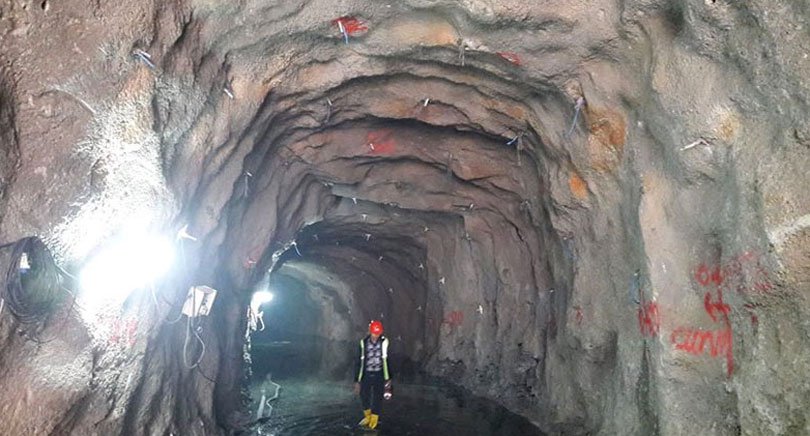
2013
On June 21, the Cooperativa Muratori e Cementisti di Ravenna (CMC) of Italy won the bid for Rs 8.7 billion. The deadline for the project was extended to September 30, 2016.
In December, the loan expired while tunnels were yet to be constructed.
2015
In April, the massive earthquake hit Nepal, and the Sindhupalchok district was one of the most affected places. This delayed the completion of the project further away.
2016
In October, the construction of around 20.6 km of tunnel was completed.
2017
In September, the deadline for the completion of the project was again pushed back.
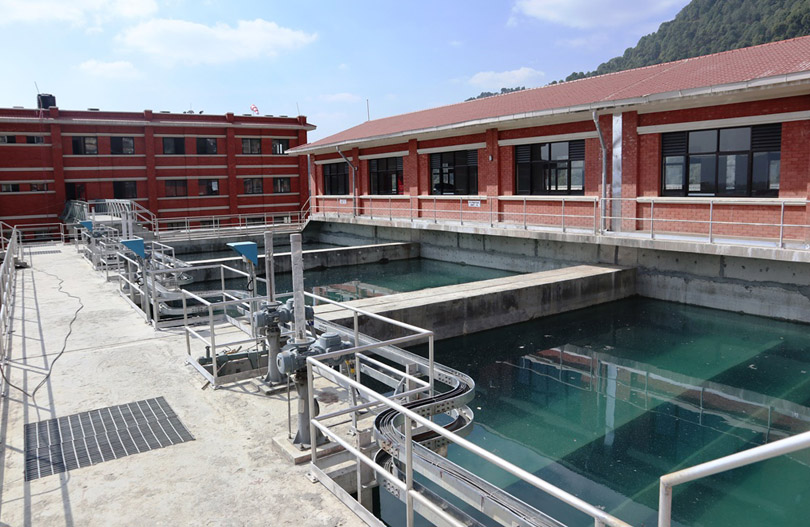
2018
The contractors successfully completed the tunnel work of 3,600 metres. Also, the concretisation of 9.5 km of the tunnel was also completed. About 90% of the tunnel construction was completed.
The installation of 684 km out of 720 km of pipelines was completed in the Kathmandu valley.
The deadline with the contractor, Cooperativa Muratori e Cementisti di Ravenna (CMC), was pushed to mid-February 2019.
2019
The contractor, CMC broke the contract with the government over the payment issue.
2020
On July 14, two staff of the MWSP were swept away at the construction site and died due to the breaking of the control gate causing flooding during the testing of the tunnel.
In October, the deadline for the completion of the project was revised to April 15, 2021.
2021
On February 22, water was released in the main tunnel (Helambu rural municipality-1, Sindhupalchok).

On March 6, Melamchi water finally reached Kathmandu’s treatment plant at Sundarijal through a 26-km-long tunnel as a part of a tunnel testing process, after uncountable delays and a two-decades-long wait. This was done for cleaning the tunnel and the water was flushed to Bagmati river.



